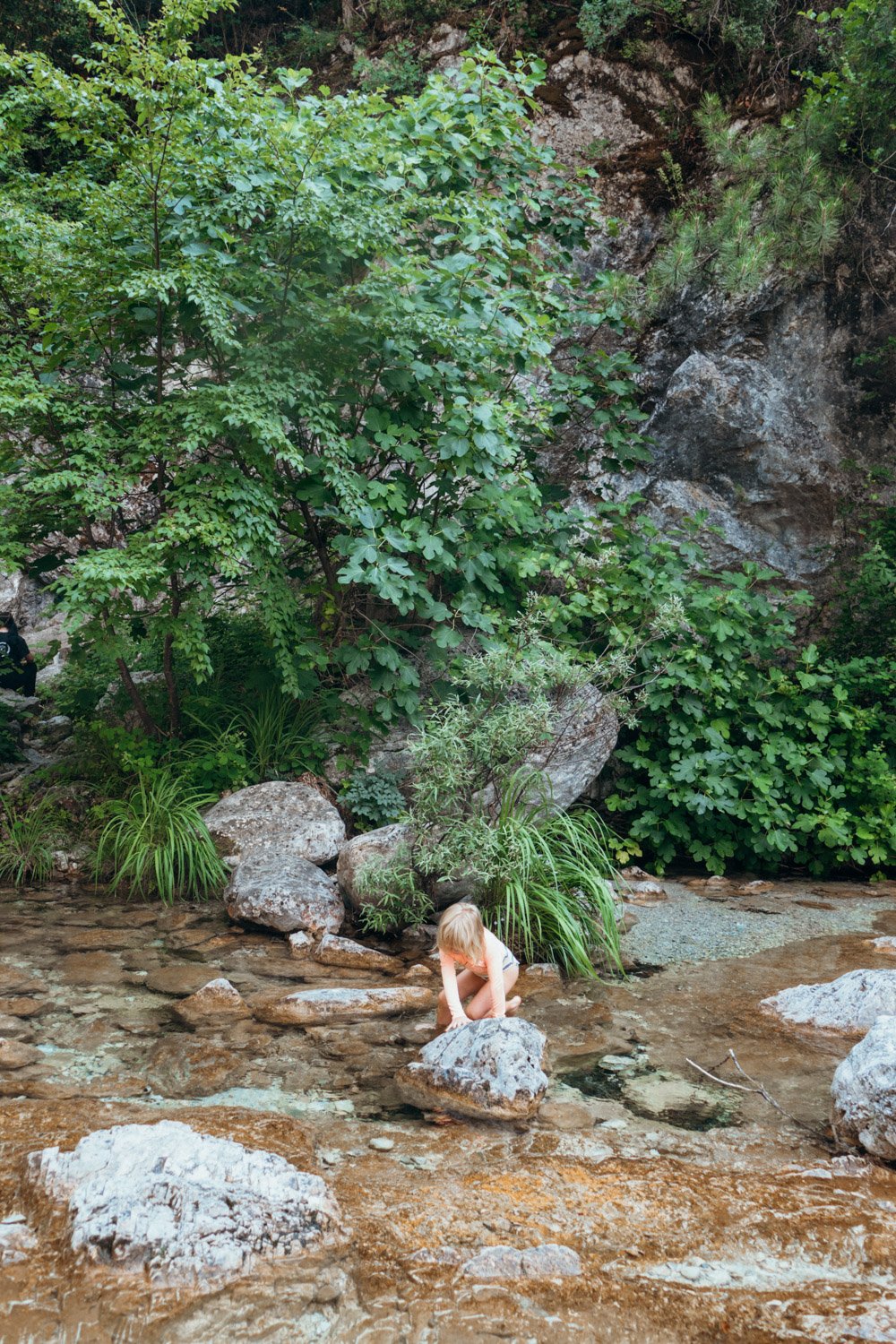What is Slow Travel? A Starter Guide for Families
What is slow travel and why should your family embrace it? We’re sharing some some universal slow travel tips for your next family adventure.
The slow travel movement has been - ironically - gaining traction in recent years. As consumers and travelers have grown more mindful of their actions and purchases, so too has the appeal of traveling more consciously.
Families that travel are likely used to everything taking far longer than usual. We’re no strangers to the triple-the-time it takes to do something as simple as a short hike, stopping to survey the infinite insects on a path, or having a spontaneous Frozen reenactment on a stage of rocks. Yes, being a parent who travels already embodies the tenets of slow travel if anything out of pure necessity.
But actively choosing to pause and be intentional with our pace can bring a whole new meaning to our time away. Slow travel with our kids can deeply enrich our family adventures and provide our little ones with a greater understanding of the world around them.
In this guide, we’ve covered everything you need to know about slow travel for families, including some universal slow travel tips that everyone can try on their next trip.
What is slow travel?
The slow travel movement is an approach to travel that encourages a deeper connection to the destination that you’re visiting. It requires you to slow down and focus on quality as opposed to quantity; by taking your time, you can engage in an in-depth exploration of the place, people, culture and history. It’s the antithesis of mass tourism where travelers whizz through highly-frequented destinations, sights and attractions, with little thought about the place they're in and the impact that they’re having. Instead, slow travelers visit lesser-known destinations for longer periods of time, enjoying slower methods of travel and supporting small, local businesses.
“The slow travel trend is a healthy counterpoint to the instant gratification of todays all accessible world of travel-- it stems from the concept of slow food, which began in Italy in 1986 as part of an anti-McDonald’s citizen movement. The goal was to preserve regional cuisine and promote local farmers and communal meals.”
— Beside Magazine
The benefits of slow travel
While the thought of skipping heaving tourist areas with our kids in tow is already appealing, let’s talk about the benefits of slow travel. The slow travel movement is a win-win situation for everyone involved:
As a traveler you get to have a meaningful trip that provides what you’re really seeking when you travel; a change in perspective, time to appreciate your surroundings, connections with locals and memories with your family that you’ll keep forever.
As a family, it takes off the pressure to fit in as much as possible. By slowing down, you get to make room for spontaneity and open the door to experiences that your kids may have missed out on otherwise such as making new friends. For children especially, slowing down can fuel creativity, imagination and develop cognitive skills that come from exploring somewhere new.
Where fast travel has resulted in overtourism, slow travel is inherently more sustainable and responsible. By visiting under-the-radar spots, your money goes further in supporting local communities and overcrowded destinations can get a little breathing room too.
How to practice slow travel as a family
We’ve put together some slow travel practices to try on your next family vacation, but they can be used by anyone looking to press pause and delve deeper.
Take the scenic route
Slowing down your means of transport can radically alter your experience of a place. Picture two families exploring London for the first time. One takes the tube for the week, while the other family travels by foot, bike and public transportation. The second family would have discovered off-the-radar spots, observed more of their surroundings and seen how the different parts of the city connect. By taking slower routes, you get to immerse yourself with locals and enjoy your new surroundings. Traveling Europe by train rather than flying lets you make the journey itself part of the adventure. You physically feel your journey taking place as you observe the landscape change around you. Try not to isolate yourself in a tourist’ bubble and opt to walk, bike and use public transport when you can.
Stay in one place
It can be tempting to squeeze in as many sights as possible while you’re away. The outcome is that you find yourself skimming through a checklist for the sake of saying that you’ve been. For a truly slow experience, try narrowing down your focus area . See how well you can get to know the neighborhood you’re staying in, rather than the whole city. Or if you’re staying in the countryside, try spending more time enjoying nature rather than driving elsewhere. The beauty of this practice is that you can get creative with your activities. For instance, encouraging your children to learn about nature from a micro-perspective or as a citizen scientist can open up their curiosity about the world and encourage them to think about nurturing the planet. Ditch the bucket list and think about projects or hobbies that your younger ones would benefit from.
Get off the beaten track
You’ve likely heard of destinations struggling with overtourism, but did you know there are places that suffer from under-tourism? These are the places that actually need more tourists, and this is where your money as a tourist can have the most impact by helping local families and economies, and restoring nature. If you are planning to visit somewhere that’s more well-known, try visiting in off-season if possible, or visit sights outside of peak hours for a more localized experience.
Explore your own backyard
For the most sustainable method, remember that all of these practices can be done at home. Slow travel is a mindset that can be adopted anywhere, allowing you to turn the mundane into an adventure. Connecting with nature on a deeper level, getting to know different cultures and communities, and supporting local projects and businesses can all be done in your own country. These experiences can be particularly beneficial and informative for kids who will feel more connected to their home and community, teaching them the important message that sustainability starts where you are.









